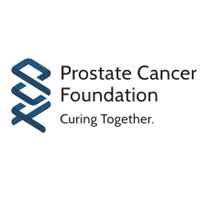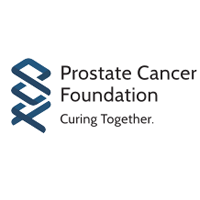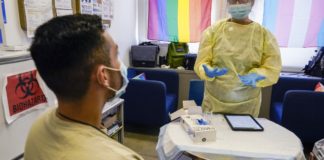
If you are a gay or bisexual man and you have localized prostate cancer, there’s something you should know: the overwhelming majority of research on recovery, quality of life, and side effects of treatment for localized prostate cancer is based on heterosexual men.
Confession: I have been writing about prostate cancer since 1992, and I didn’t know this. Since 1993, I have written bestselling books on prostate cancer with Johns Hopkins urologist Patrick C. Walsh, M.D. With Northwestern University urologist Edward M. Schaeffer, M.D., Ph.D., we are finishing the 5th edition of Dr. Patrick Walsh’s Guide to Surviving Prostate Cancer, and this edition has something new and long overdue: a chapter devoted to treatment considerations for gay and bisexual men with localized prostate cancer.
In 2021, Schaeffer created the Gay and Bisexual Men’s Urology Program at Northwestern, after research showed urologic disparities in sexual minority patients. The clinic brings together primary care physicians, social workers and sex therapists within the Northwestern system to provide culturally appropriate urologic care. Unfortunately, this clinic is one of only a handful in the world.
Why does this matter? Prostate cancer is prostate cancer, and doctors should treat everyone the same, right? That’s certainly what a lot of well-meaning urologists do. In 2018, Northwestern urologist Channa Amarasekera, M.D., who directs the clinic, sent a survey to 154 academic urologists throughout the U.S. Slightly more than half of these doctors said they thought gay, bisexual and straight men had similar health concerns related to prostate cancer treatment and recovery. The majority said they do not ask about sexual orientation. Many of these doctors may think they are being nonjudgmental, and are genuinely attempting to treat all their patients the same. More than half said they felt that prostate cancer health concerns were similar for both groups.
Unfortunately, “not asking about a patient’s sexual orientation is a missed opportunity,” says Amarasekera, “for physicians to get to know their patients better, and for patients to express what is important to them.” The truth is that health concerns are very different between gay and bisexual and straight men. So are responses to treatment and their effects on quality of life, which can differ strikingly.
“Overall,” says Amarasekera, after treatment for localized prostate cancer, “gay and bisexual patients experience lower health-related quality of life.” In a 2016 study, compared to heterosexual men, gay and bisexual men scored lower on the Functional Assessment of Cancer Therapy-Prostate (FACT-P) scale. “They had a greater degree of psychological distress – anxiety, panic, and depression – thought to be due to greater degree of bother from side effects, a fear of recurrence, and generally lower satisfaction with care.” Amarasekera and others hope that by discussing their specific needs and fears with their doctor before treatment, gay and bisexual patients can have a better quality of life afterwards.
Other research done by Amarasekera and others, including University of Minnesota epidemiologist B.R. Simon Rosser, Ph.D., M.P.H., has shown that sexual minority patients report encountering prejudice, assumptions, lack of sensitive or knowledgeable care providers, a lack of good information, and few support groups.
In our book, we report on what Rosser describes as a “research desert.” In a talk Rosser gave at the National Cancer Institute, he referred to a study by Amarasekera and to his own research, commenting: “Our two studies should not be producing half of the world’s literature on this population.” Fortunately, this desert is beginning to show signs of life, with new findings pointing to a practice change in helping gay and bisexual patients determine the right treatment for localized prostate cancer, and helping improve quality of life as they recover.
What, specifically, do gay and bisexual men need to know? The short answer is that your sexuality and what kind(s) of sex you engage in are important factors in your cancer management strategy. Specifically, your role-in-sex identity: receptive, insertive, or both.
If you are the receptive partner, you really need to know that radiation can cause rectal fibrosis and pain with receptive anal intercourse. For some men, this seriously affects their ability to have receptive sex ever again. If you are a candidate for either prostatectomy or radiation therapy, you need to consult with your urologist and a radiation brachytherapy, you need to understand that all radioactive seeds are not the same: Palladium has a shorter half-life than iodine, and if you engage in receptive anal intercourse, this may be a better choice for you. “A condom is not going to help protect your partner from radiation,” says Amarasekera. “Every treatment has its own complications, and with brachytherapy, the potential complication is the effect of radiation on your partner, which is four months shorter with palladium.”
If you are the insertive partner, you need to discuss with your doctor the impact on erectile function in the short term. The recovery of erectile function after surgery depends on several key factors: your cardiovascular health, whether or not you were having any erectile dysfunction (ED) before surgery, the extent of your cancer (whether one or both neurovascular bundles, the nerves on the outside of the prostate that control erection, were able to be spared during surgery) – and, frankly, the skill of your surgeon. ED can occur after radiation, as well, but it may be more gradual. Here again, if you are a candidate for either surgery or radiation, it is essential that you discuss your needs and goals with your doctors.
If you practice both, you need to discuss the risks and benefits of both procedures, and determine which one is best for you.
Another important note: What’s your prostate cancer risk group? Your urologist should discuss this with you in determining your treatment options, but briefly: if you have very low-risk or low-risk prostate cancer, active surveillance is a good and probably long-term option. Your cancer will be monitored carefully, but you can avoid the side effects of treatment, perhaps for many years. If you have high-volume low-risk prostate cancer or low-volume intermediate-risk cancer (Gleason 3+4=7, with very little Gleason pattern 4 cancer), you may be able to go on active surveillance for at least a few years. If you have unfavorable intermediate-risk, high-risk, or very high-risk cancer, then it needs to be treated sooner rather than later: your job is to be your own advocate and find the right treatment that will cure your cancer.
If you don’t feel comfortable discussing these issues with your doctor, consider a telemedicine appointment with a specialist at a center with expertise in treating gay and bisexual men with prostate cancer, to come up with the treatment plan that is right for you.








